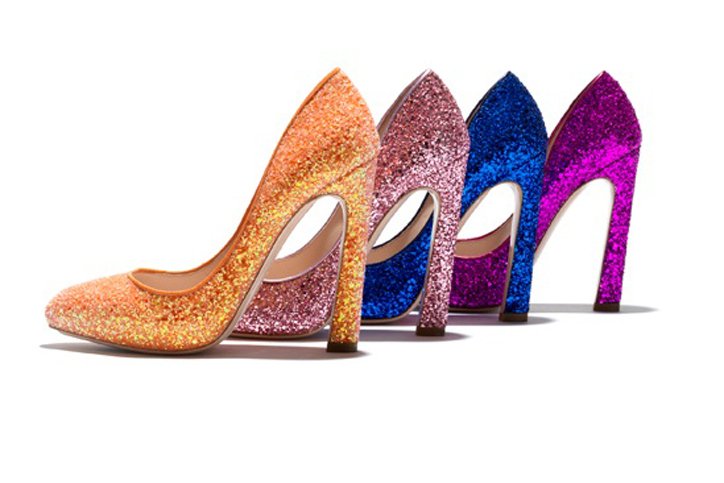By Prarthana Mukherjee
When we think of communication, we most often think of the verbal ways in which one speaks to another. In more recent years, people have begun to broaden the definition of the term to include forms such as art, music, poetry and dance. As our understanding of communication has expanded from simply the verbal aspect, the body as a whole has become a tool with which to create, convey and represent messages.
The body as an instrument of communication does not just mean that the mouth speaks, the hands mold or the feet move. We communicate even further on a non- verbal level by what we chose to cover ourselves with. For centuries, people have used the language of dress to express personal things such as race, class, gender, ethnicity and religion but also larger social and political movements.
Every language has a vocabulary and grammar, which act as rules of communicating with others. We learn the rules of our spoken language at a very young age, not only in school but also from hearing people speak around us, and participating in conversation. The way in which we know how to speak was not entirely taught to us, as we develop a subconscious understanding of what is grammatically correct through the lived experience of speaking and listening to others.
Fashion, just as any other language, has its own grammar. There are unspoken rules about what matches, what is appropriate, what to wear in certain situations and what is unacceptable. And while every language has different accents and dialects, so does fashion. Different cultures, religions and groups of people have different ways of constructing outfits to communicate their beliefs, customs and history. Similar to spoken language, these rules are learned from our family, friends, groups to which we belong, and the media.
The “words” that make up the language of fashion include hair styles, make up, jewelry, shoes, clothing, and accessories. Just as words are put together to create sentences, the building blocks of the speech of fashion are put together to create outfits or certain looks. Some people have a very large vocabulary of clothing and can create a plethora of outfits to communicate different things at different times. Others have a limited vocabulary, whether because of economic restrictions or by choice, and have limited options for conveying messages using clothing.
Choosing the right words to express your thoughts is critical in making sure you get your message across the way you want it to be understood. Saying the wrong thing can cause a lot of damage to yourself and the person who hears you. While you may use a more formal way of speaking with teachers and employers, you may use a more casual form of speech with family and friends.
Fashion plays the same role. Certain outfits, hair styles or make up may be appropriate at specific times and places, and offensive at others. You may wear one thing in front of your parents, and another thing out with your friends. For example, a mini skirt, high heals and heavy eye shadow are perfect for going to a bar, but may be detrimental to a job interview at a law firm. Choosing the right attire to give off the impression you desire is just as important as finding the right words to deliver a message.
The rules of grammar can be, and very often are, broken. They way we speak English today would be appalling to our great, great grandparents. Different dialects come about by people breaking the rules of the language and creating a new way of speaking. The rules of “dress grammar” are often broken as well. Some of the latest trends are the result of stepping outside the norm to create something different and unheard of.
Some rules, however, are taken very seriously. Women are not allowed to go topless in most parts of the United States, and men are not allowed to walk around without pants on. Some cultures, such as the Amish and religious Jews, have very strict dress rules that cannot be broken. These rules stem from deeply rooted religious beliefs, and serve as a form of identification for individuals who are members of that community.On a less serious level, every subculture has unspoken rules about what to wear. Just as a group of preppy students from Vaderbilt University, a black gang from Compton, New York and a sorority from University of Hartford would all have different ways of communicating within their groups and with other groups, those same subcultures have implicit rules for what to wear and how to wear it. There are also rules about what not to wear.
Often times people use slang or curse words to emphasize a feeling, get attention or signify emotions. While this type of speech has become increasingly accepted in our culture, it is still disapproved of in many situations. Slang is a more casual form of speech while curse words give emphasis and demand attention. Jeans, t-shirts and sweatpants are the slang of dress, and give a relaxed, loose feel to your appearance.
There are also ways of dressing that can be compared to curse words. The attire of the punk movement, which consists of bold hair, ripped clothing and dark colors, can be seen as the curse words of dress. In verbal speech, slang and curse words often become accepted parts of the language, and the same occurs for clothing. While jeans were once worn as work clothes, they are now a staple item in most people’s wardrobes, and can be dressed up or dressed down for almost any occasion. Similarly, the mohawk, which used to be associated with punk culture, has meshed into the “fauxhawk” and is a popular hairstyle for teens and young men today.
In her book The Language of Clothes, Alison Lurie states, “In dress as in language, there is a possible range of expression from the most eccentric statement to the most conventional.” A woman who cannot properly form sentences and strings together words incongruently may be recognized as deranged and her outfits will probably look the way her speech sounds. Mismatched, random articles of clothing and wild, messy hair gives the mark of insanity. On the other hand, a polished, matching, expensive suit identifies the person as wealthy, professional and together.
Our culture believes strongly in first impressions. Whether a blind date, meeting your boss, or being introduced to your significant other’s parents, there is a great emphasis on coming off the right way to people. Long before you are close enough to someone to speak to them, you are aware of what they look like. What someone wears can be an instant marker of age, gender and class. It can also give information as to profession, ethnicity, mood and background.
We all consciously and subconsciously absorb the information others give us via their clothing, and create opinions based on attire. We also carefully choose our outfits depending on how we want to appear to others. If fashion is a language, and therefore a way of communicating, then clothing is the medium through which we send messages to other people. Whether the message others receive was what we intended or not, we dress with intention. While a designer may have created an article of clothing for one intention, someone may buy it with another intention. The meaning that is put into clothing during production changes drastically by the time it is perceived by someone passing by on the street.
Toby Fischer-Mirkin says in her book Dress Code: Understanding the Hidden Meanings of Women’s Clothes, “The act of deciding what to wear on any given day has repercussions that go far beyond simply reaching into the closet and putting together an outfit… Whether your selections are made out of impulse or calculation, your choices are always profoundly revealing- whether you know it or not.”
All clothing sends a message, whether we intend it to or not. It expresses every aspect of an individual. In order for people to respond to us the way we want, we must understand how our clothing is a representation of who we are and what we communicate through what we wear.
Fashion is often used to create a sense of community amongst a group of people, and to separate between those in the group and those outside the group. This is true for cultural clothing, such as Sari’s worn by traditional Indian women, but also for smaller subcultures such as sports teams. Wearing a Yankee’s hat is a way of telling others something about you, and identifying with people who are also fans. The traditional white robe with a pointed hood acts as a way for Ku Klux Klan members to differentiate themselves from the rest of the culture and recognize other group members. Wearing a t-shirt stamped with a brand name lets others know that you identify with that brand and whatever reputation comes along with it.
Clothing serves multiple functions. It is worn for modesty, to protect the body against the elements and to provide comfort. Perhaps the most intriguing purpose clothing serves is to communicate with others. It allows us to express parts of ourselves that we want people to see, and we can reveal different aspects of our character every day. Just as verbal language, fashion has the power to evoke emotion, tell a story, convey a message, reveal an identity and form a community. Lurie states in her book, “Fashion is free speech, and one of the privileges, of not always one of the pleasures, of a free world.”


































